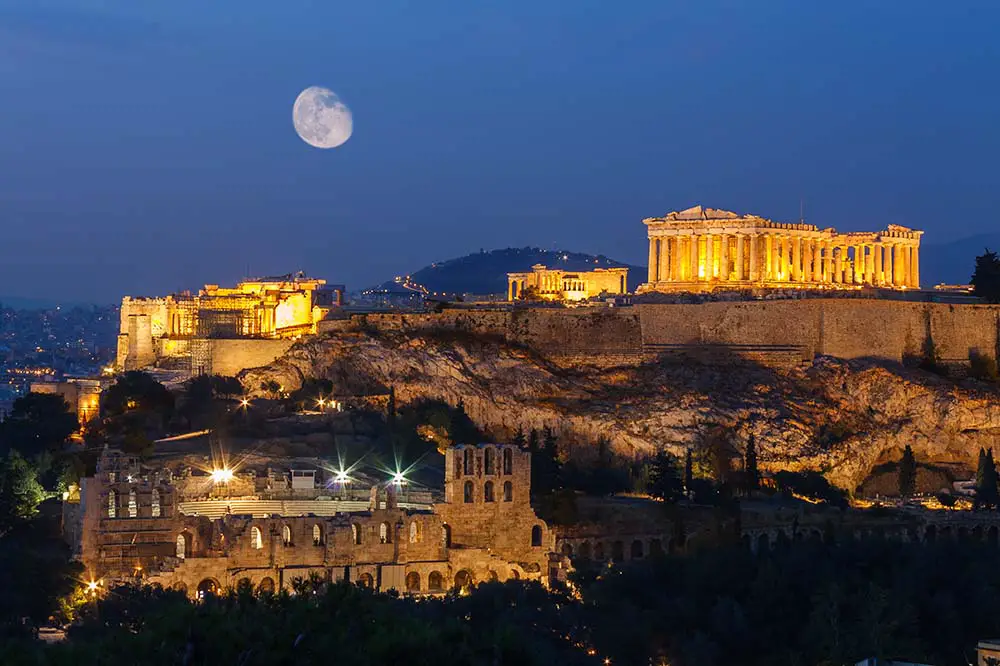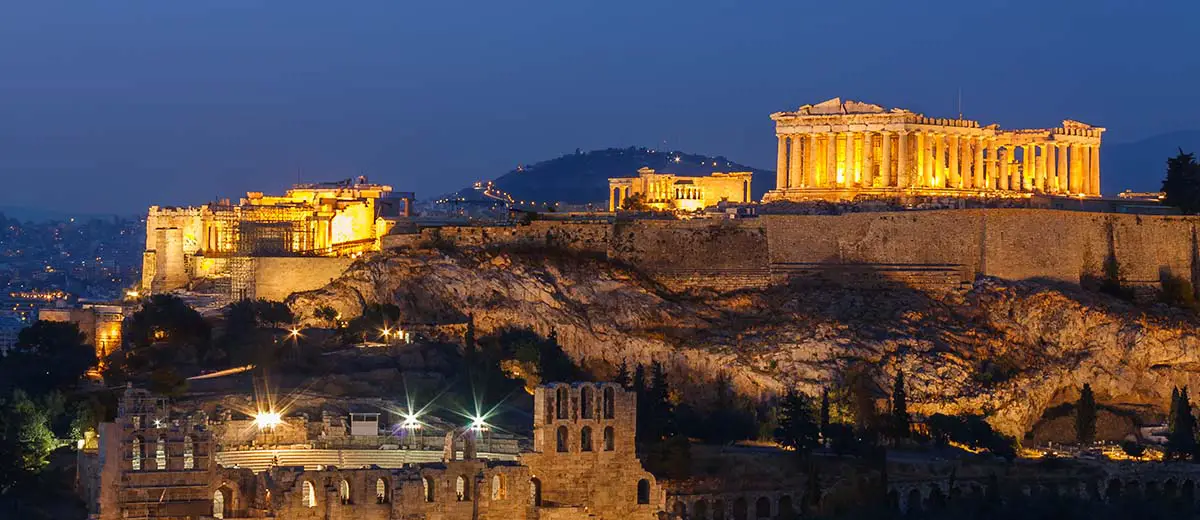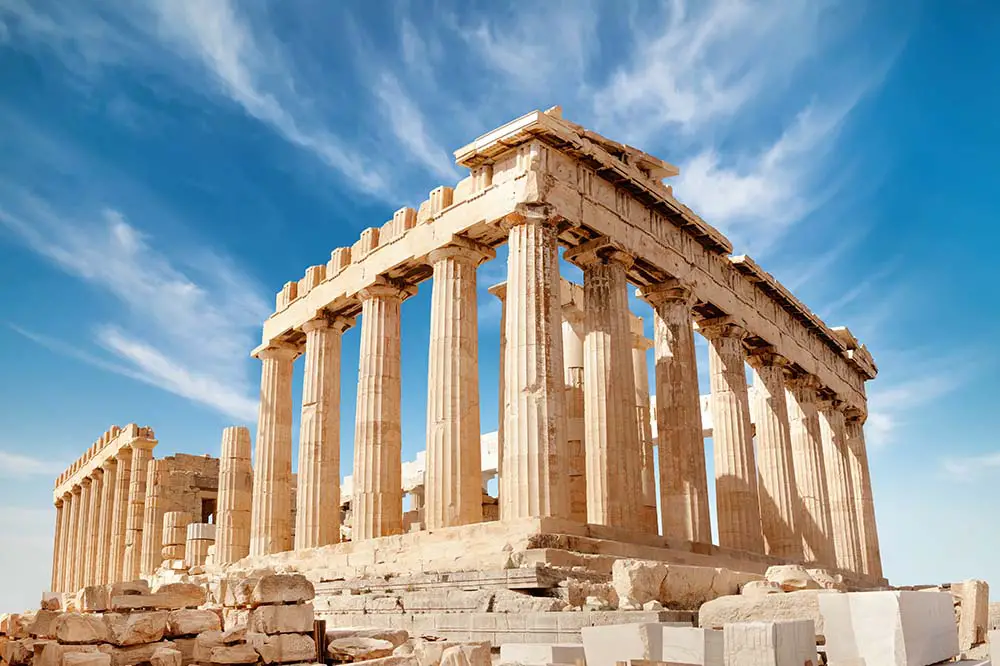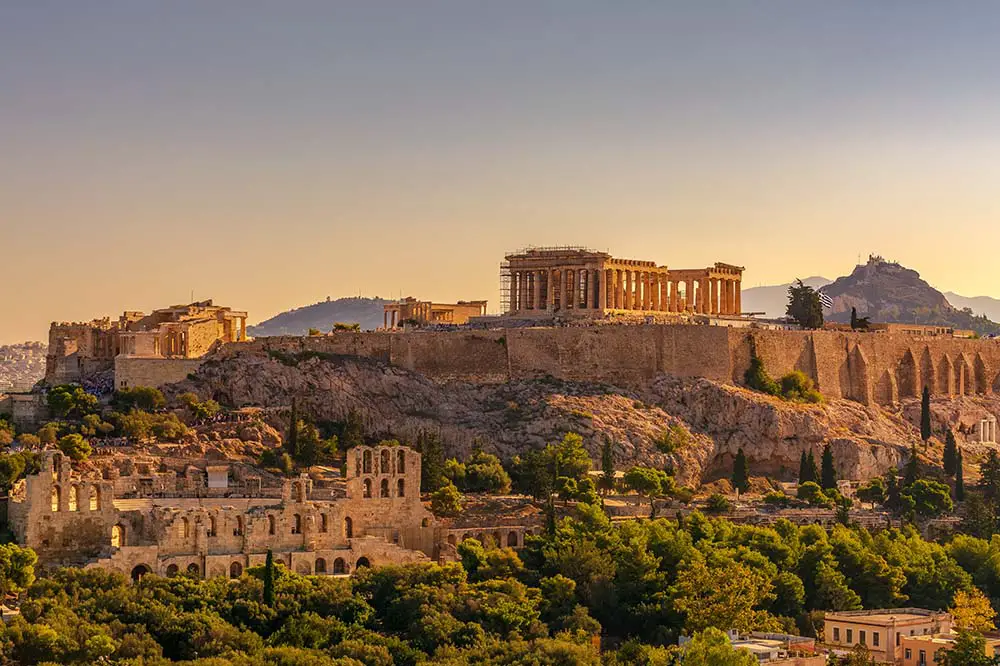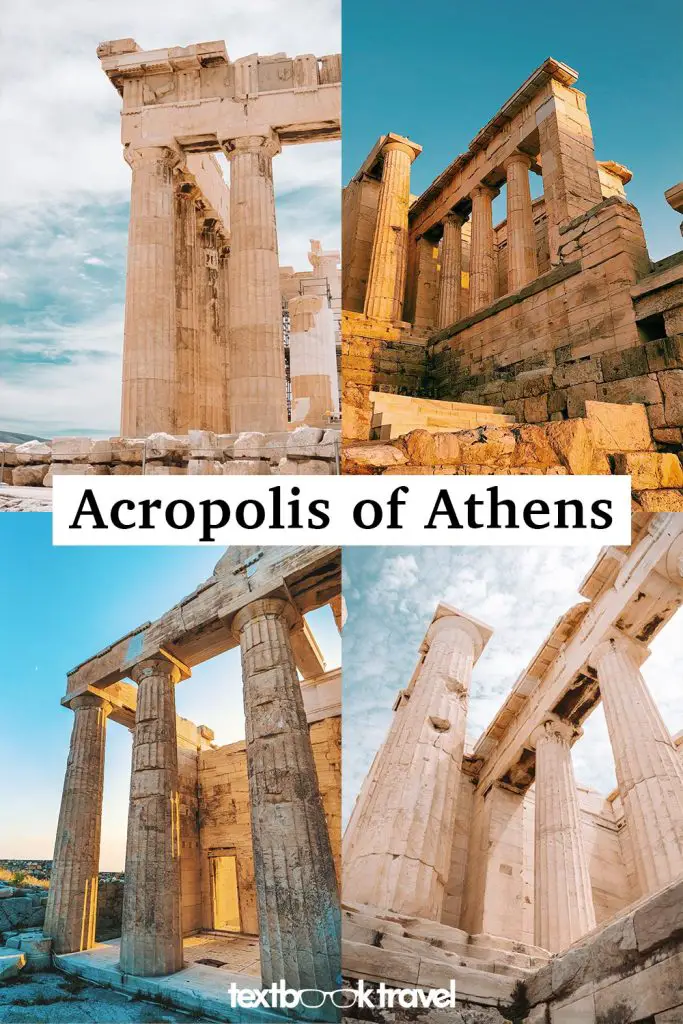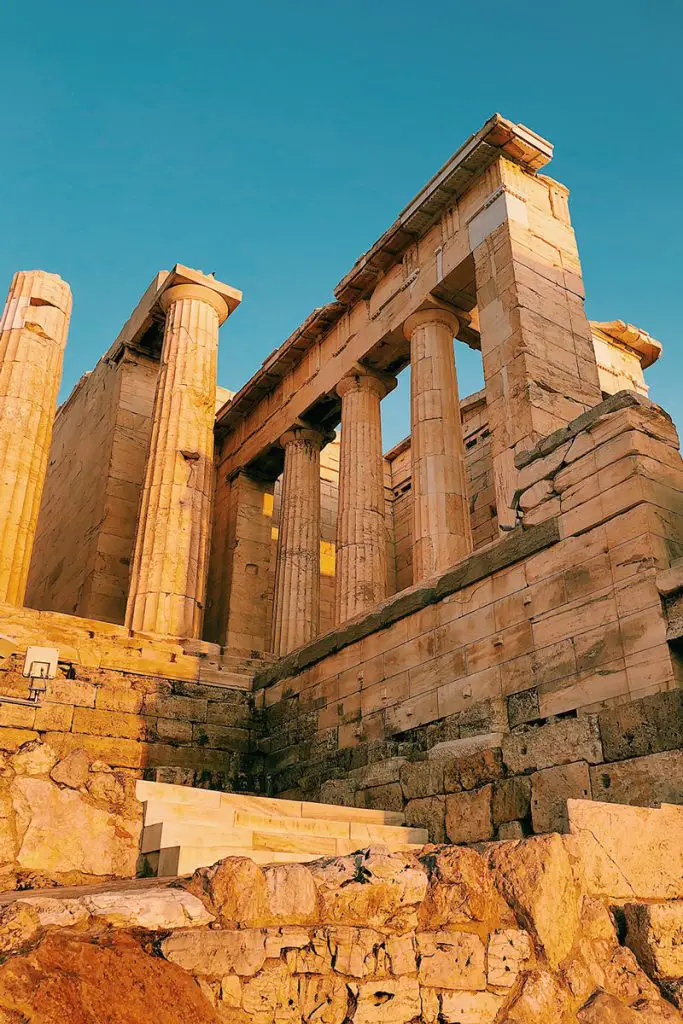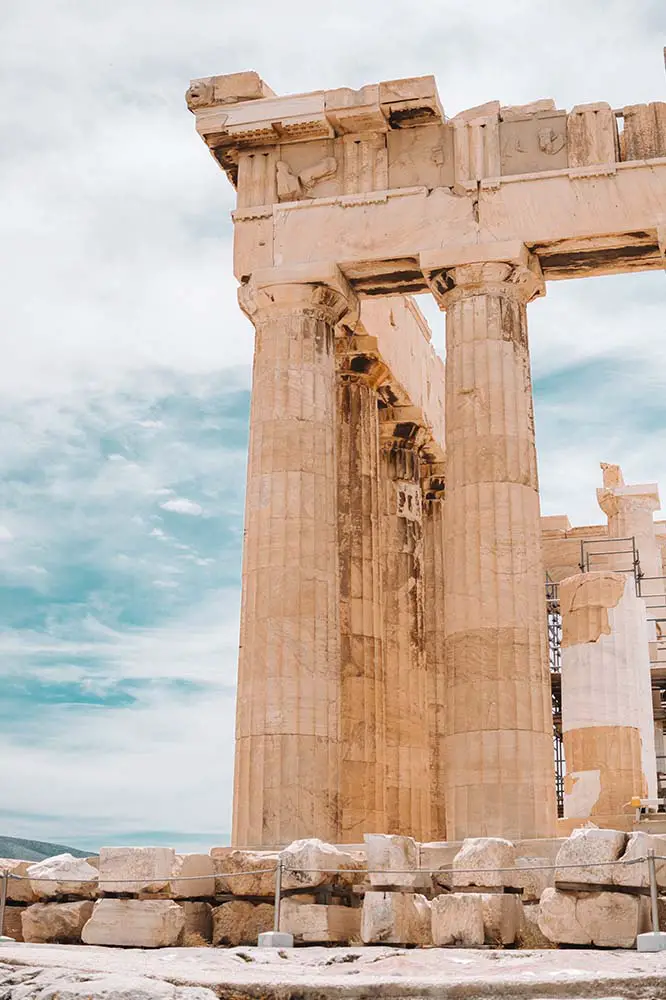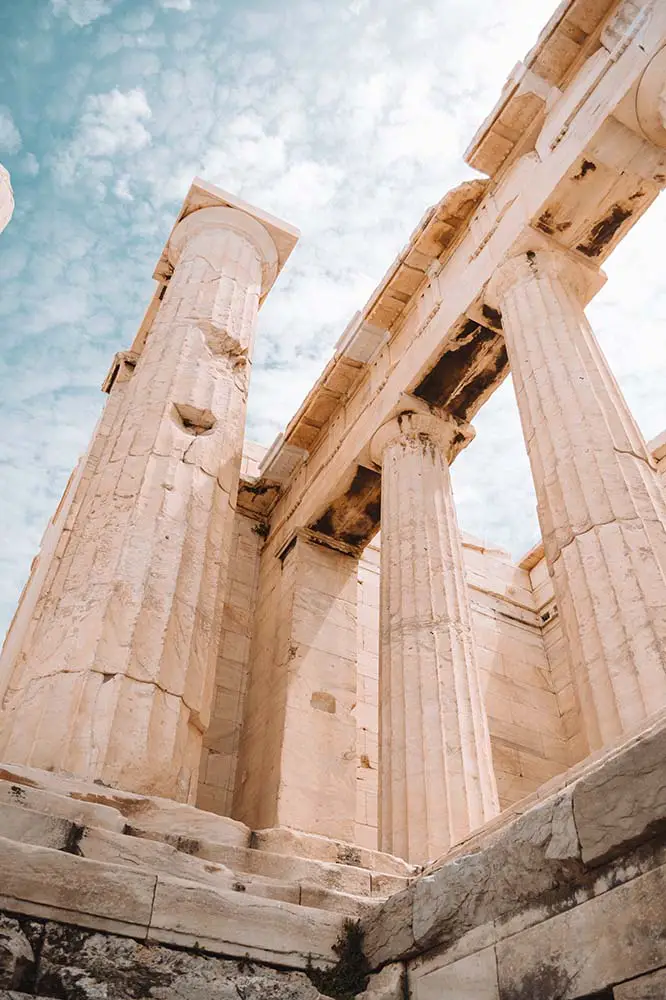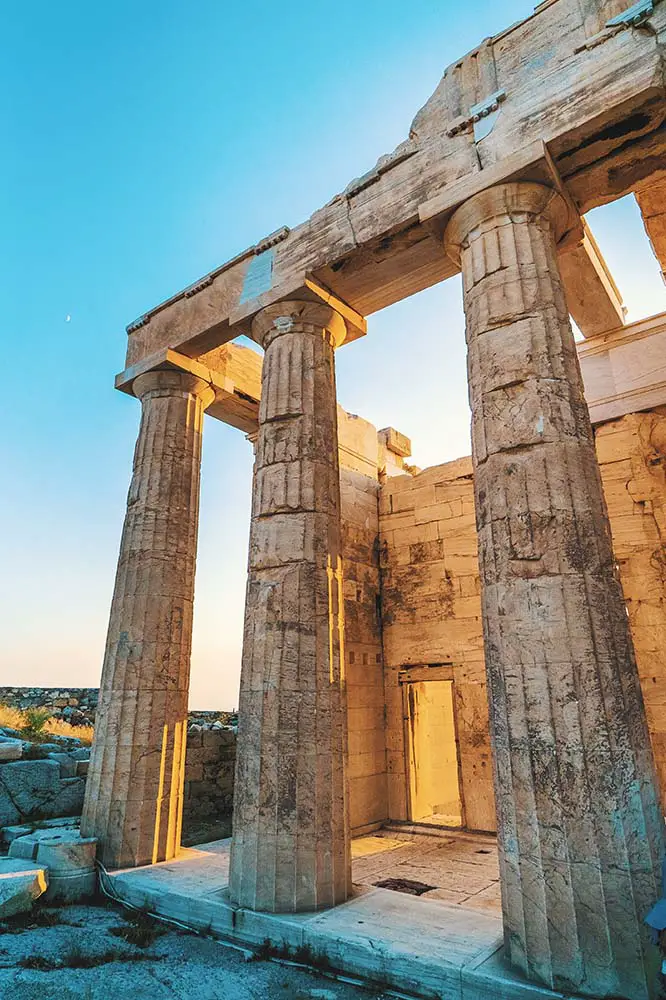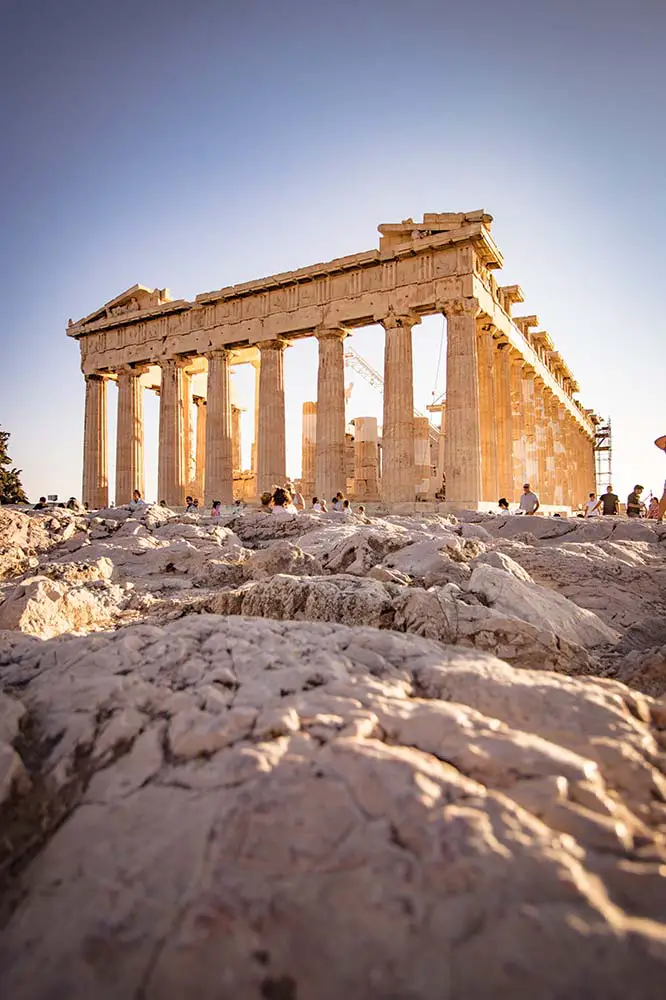Acropolis of Athens | Greek Empire, 447 BC
While the Persians were establishing their dominance in Asia, on the other side of the Aegean Sea, the Greeks were entering their classical period. This era directly followed the Greco-Persian Wars, which some evidence suggests culminated in a peace treaty called the Peace of Callias. The arts including philosophy, literature and poetry were celebrated during this period along with architecture and engineering, exemplified by the handful of structures atop the Acropolis of Athens.
Left: The Parthenon, Acropolis Hill, Athens & Right: Constantinos Kollias on Unsplash
The Parthenon, the Propylaea, the Erechtheion and the Temple of Athena Nike were all orchestrated by Pericles, a Greek statesman and general who was influential in both the Greco-Persian War and the Peloponnesian War—waged against fellow Greek city-state, Sparta. The most prominent of the structures on the Acropolis, the Parthenon is one of the finest examples of Doric architecture and stands as a defiant monument, built in place of the previous temple destroyed by the Persians.
Excuse me! Are you on Pinterest?! Here are a couple of pins! Right: Tania Mousinho on Unsplash
Gallery
This post is part of an expanded series taken from 37 Wonders of the World in Chronological Order. You can click the link to read more, watch the video or navigate between individual posts beneath the gallery. Enjoy!
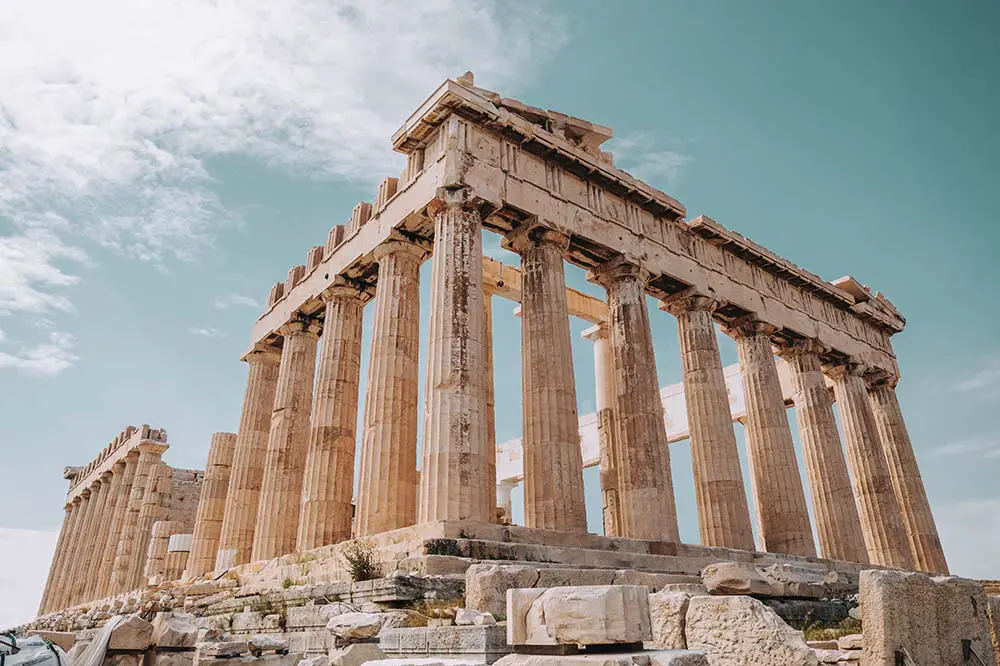
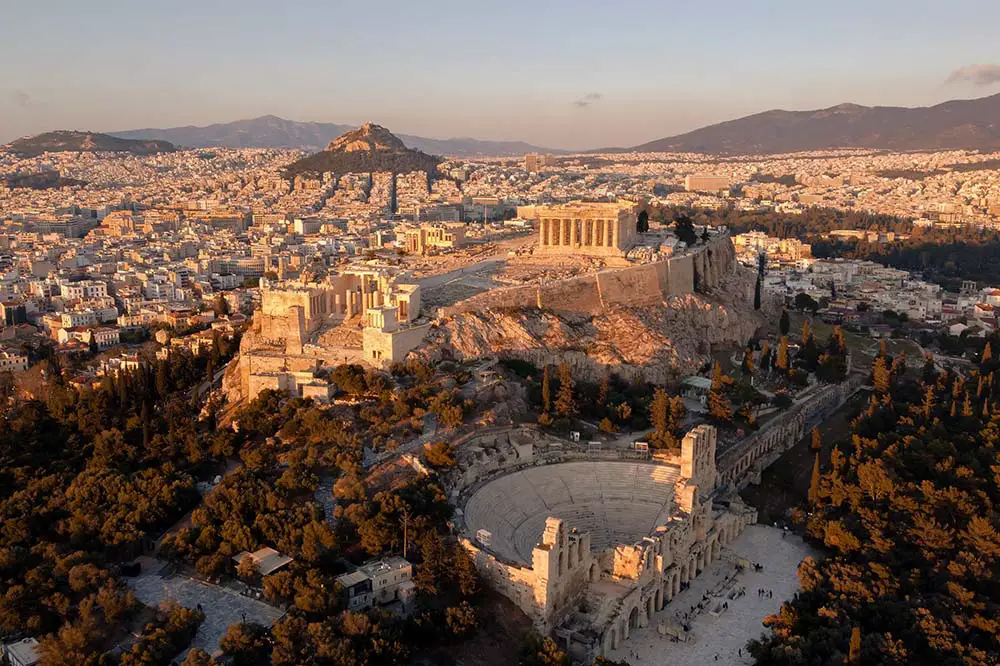
Left: Alex Azabache on Unsplash & Right: Alex Azabache on Unsplash
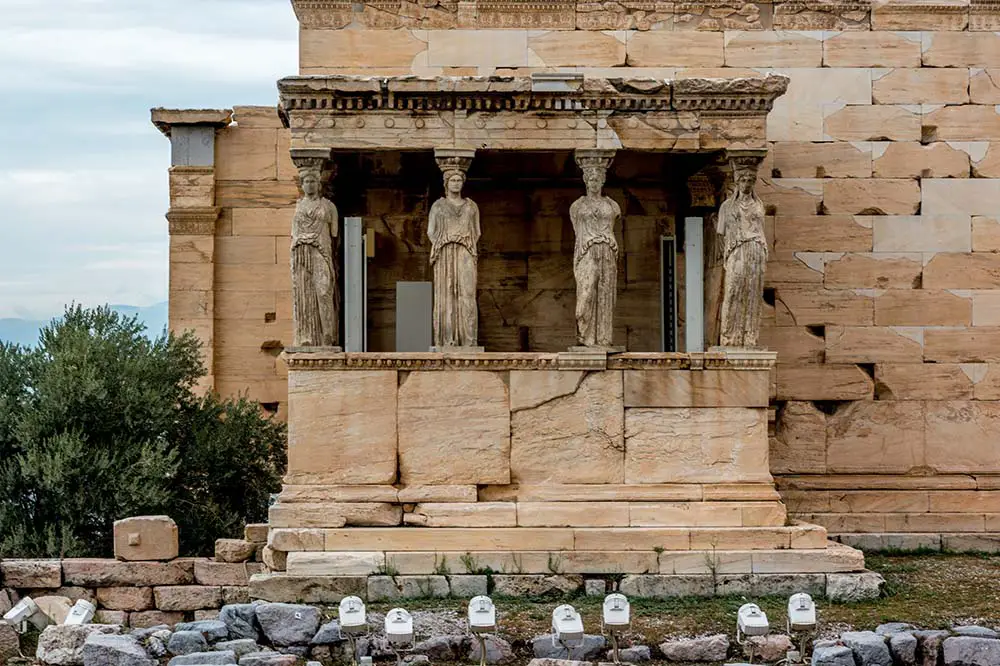
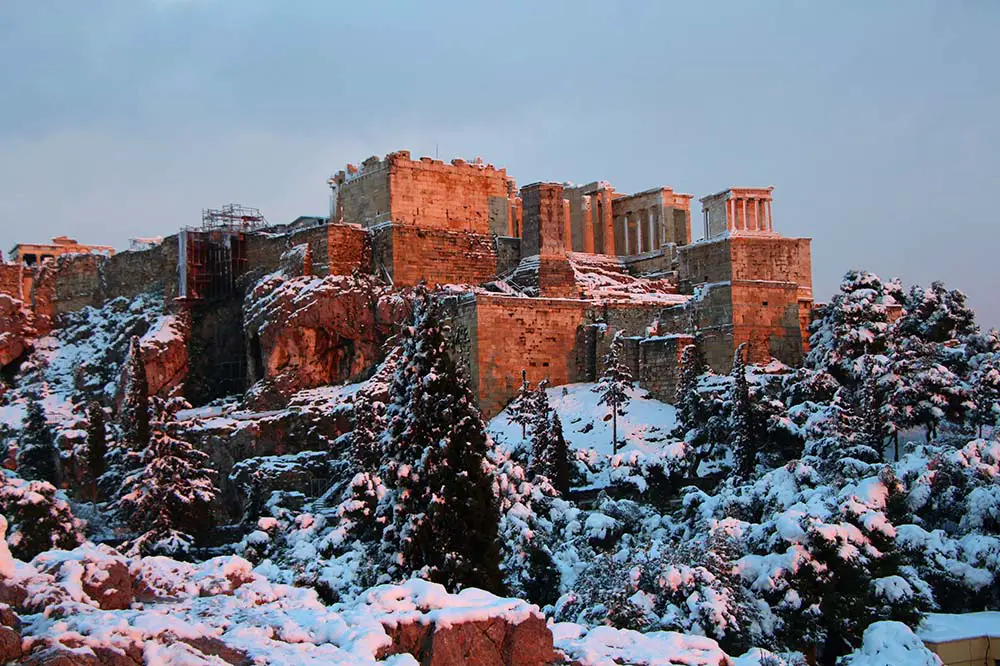

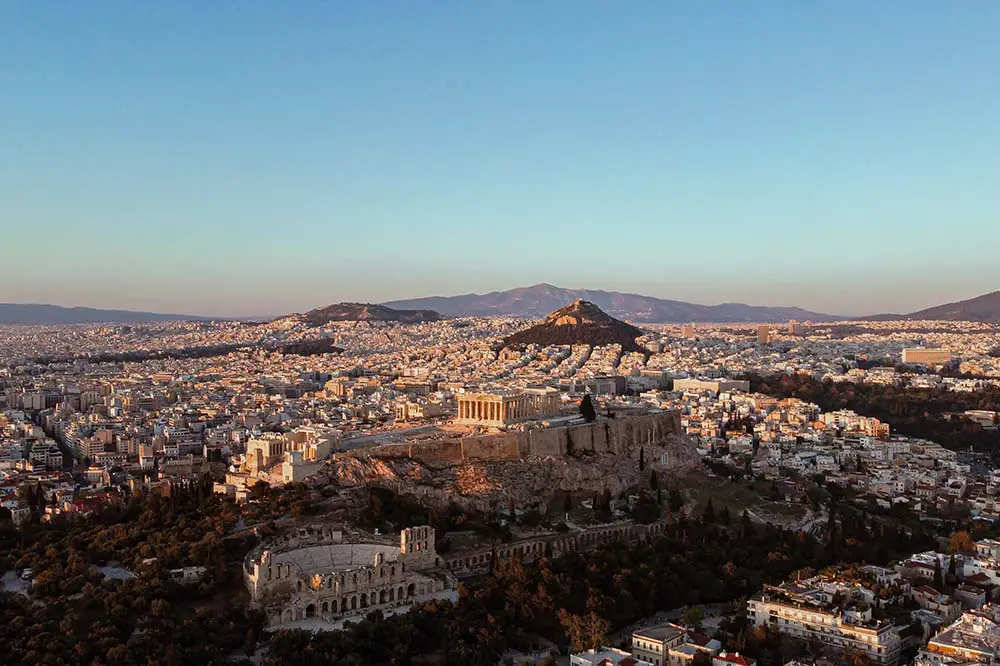
Left: Evan Wise on Unsplash & Right: Florian Wehde on Unsplash
